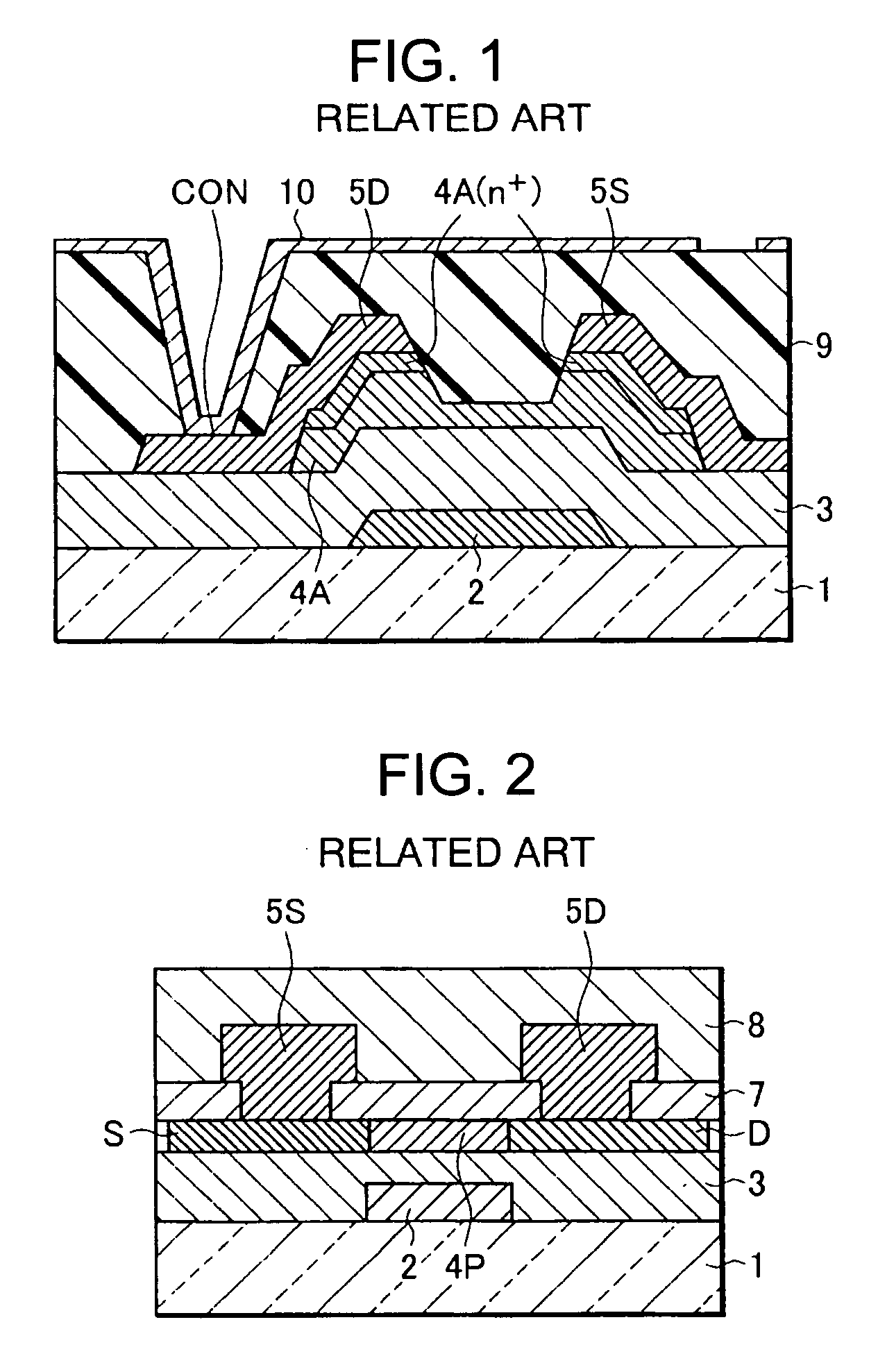Thick crack-free silica film by colloidal silica incorporation
a technology of colloidal silica and crack-free silica, which is applied in the field of thick crack-free spinon glass materials, can solve the problems of organic materials that are being used as a part of the device, the crack threshold of traditional sol-gel organic-free silicate films is about 7000 , the components are not tolerated
- Summary
- Abstract
- Description
- Claims
- Application Information
AI Technical Summary
Benefits of technology
Problems solved by technology
Method used
Image
Examples
example 1
Silicate Resin Film (Control)
Synthesis Procedure
[0061] Mix 83.0 gm acetone, 83.0 gm isopropyl alcohol, 257 gm propylene glycol monomethyl ether acetate (PGMEA) and 600 gm tetraethoxysilane (TEOS) in a plastic bottle. Mix 94.4 gm 0.1N nitric acid and 83 gm D.I. water. Add the nitric acid / water mix to the first solution at a rate of less than 3 ml per minute. Stir at room temperature for 24 hours. Store the resultant solution in a refrigerator at 2° C. to 5° C. This solution is called “T30 (6KA)”.
Crack Threshold
[0062] T30(6KA) was used to coat a film on 4″ Si wafers using an SVG coater. The spin speed is listed in the first column of Table 1. The spin time was 60 seconds. The first bake was at 125° C. for 1 minute and the second bake was at 250° C. for 1 minute. After baking, the film thickness and refractive index were measured. The coated wafers were then cured in air for 60 minutes. Post cure film thickness and refractive index were measured. Films were examined for cracks. ...
example 2
Colloidal Silica Filled T30 Films
[0063] The colloidal silica used is a stable suspension of 11 nm diameter particles, comprising 20 wt % colloidal silica and 80 wt % cyclohexanone.
[0064] Appropriate amounts of 20% colloidal silica (CS) solution were mixed with 12.00 gm of T30(6KA) according to the ratio listed in column one of Table 2. For example, for a ratio of 0.375, 4.5 gm of 20% colloidal silica was mixed with 12.00 gm T30(6KA). In addition, 0.2 to 0.45 wt % of 1% tetramethylammonium acetate (TMAA) was added to the spin-on solution. The solution, after mixing, was left standing at room temperature for 2 to 5 hours. The solution was then filtered through a 1μ Teflon syringe filter.
[0065] Spin coating was performed using an SVG spin coater on 4″ Si wafers. Spin speed was listed in the last column of Table 2 with a spin time of 60 seconds. First baking was at 125° C. for 1 minute and the second baking was at 250° C. for 1 minute. After baking, the film thickness and refractive ...
example 3
Film Characterization
(A) Sample A
[0068] 42.00 gm of 20% colloidal silica in cyclohexanone was mixed with 8.40 gm T30(6KA), corresponding to ratio of 5 as in sample 2F of Table 2. 0.21 gm 1% tetramethylammonium acetate in acetic acid was added. The solution was left at room temperature for 18 hours. Solution was then filtered through 5 μm Nylon filter
(B) Sample B
[0069] 31.25 gm of 20% colloidal silica in cyclohexanone was mixed with 18.75 gm T30(6KA), corresponding to a ratio of 1.66 as in sample 2D of Table 2. 0.21 gm 1% tetramethylammonium acetate in acetic acid was added. The solution was left at room temperature for 18 hours. Solution was then filtered through 5 μm Nylon filter.
[0070] Both solutions were coated onto 8″ wafer and glass substrate. Data are shown in Table 3. For Sample A, with a ratio of 5.00, cured to a crack-free film and a thickness of 1.4 um was obtained. This demonstrates the crack threshold can be at least double over the control T30 with the addition o...
PUM
| Property | Measurement | Unit |
|---|---|---|
| transparency | aaaaa | aaaaa |
| thickness | aaaaa | aaaaa |
| thickness | aaaaa | aaaaa |
Abstract
Description
Claims
Application Information
 Login to View More
Login to View More - R&D
- Intellectual Property
- Life Sciences
- Materials
- Tech Scout
- Unparalleled Data Quality
- Higher Quality Content
- 60% Fewer Hallucinations
Browse by: Latest US Patents, China's latest patents, Technical Efficacy Thesaurus, Application Domain, Technology Topic, Popular Technical Reports.
© 2025 PatSnap. All rights reserved.Legal|Privacy policy|Modern Slavery Act Transparency Statement|Sitemap|About US| Contact US: help@patsnap.com



